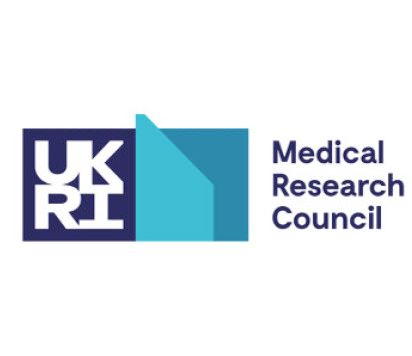Barun Dutta (imec): The Neuropixels Project: Scaling high channel count probes for electrophysiology to the scaling limit!
The Neuropixels Project and the resulting Neuropixels probes, has dramatically increased the quality and the volume of single unit electrophysiology recording. The complementary funding for tools from the NIH-Brain Initiative has created a strong a durable interest in revisiting electrophysiology as a tool, to realize the potential of a high resolution electrophysiological brain atlas. We will discuss the Neuropixels 1.0 recording sensors and their position in the current state of the art and their capability. In addition, I will also discuss the future roadmap of the Neuropixels probes and their ability to cover more tissue, higher channel counts, and their potential combination with light sources/electrical stimulation. Furthermore, I will show early indicative data demonstrating the potential of extending the Neuropixels technology to larger mammalian brains, and their potential benefit. I will end by giving a little bit of insight and speculating on how with enough funding a 25000-30000 channel minimally invasive recording system could be built, that would enable a electrophysiology brain atlas and routine high channel count access to the entire neuroscience community of such tools.
Andrew Jackson (Newcastle Univesity): Neural interfaces for monitoring and manipulating network dynamics
In this talk I will overview next-generation neural interface technologies for monitoring and manipulating neural activity. These can be used as tools for understanding the neural mechanisms of learning and memory in animals, as well as having potential therapeutic applications for modulating network function. I will describe Neurochip electronics for long-term, large-scale brain recordings in freely-behaving animals, showing scientific results relating to neuroplasticity and oscillations during sleep. I will then describe closed-loop optogenetic implants for manipulating oscillatory activity. Although these studies do not focus on dementia, I will speculate on whether these technologies could be used to develop new biomarkers and therapies, for example targeting mechanisms of memory consolidation during sleep.
Marc Busche (University College London): What happens to neural circuits in Alzheimer's disease?
Alzheimer’s disease (AD) is one of the most severe and devastating brain disorders anyone can experience; it affects millions and costs the health care system billions. While most research in the last decade has focused on the brain pathology and the biochemistry of AD, recent technological breakthroughs in single-cell and circuit approaches have shifted the focus towards a better understanding of the cellular and circuit underpinnings of progression in the disease. I will summarize our recent work demonstrating how the major proteins involved in the disease, Tau and A-beta, affect neural circuit function, disrupting normal brain activity patterns and leading to cognitive impairments. I will further present data on the effects of anti-Abeta and anti-tau therapeutic approaches on those dysfunctions.
Shelley Fried (Harvard University): Development of a micro-coil-based cortical visual prosthesis
We are evaluating the use of implantable micro-coils to magnetically stimulate neurons of the cortex. Such an approach is a potentially attractive alternative to the use of conventional micro-electrodes because the induced fields from micro-coils are spatially asymmetric and therefore, can be harnessed to selectively target or avoid specific neuronal sub-populations. For example, vertically-oriented pyramidal neurons of the cortex can be strongly activated while horizontally-oriented passing axons are avoided; this helps to better confine activation to a focal region around each coil and thus allows more precise patterns of activation to be created, e.g. from a multi-coil array. This approach is particularly attractive for applications that target sensory cortices, i.e. where precise targeting of specific regions is required. The use of inductive activation also overcomes some of the instability that can arise with implantable cortical micro-electrodes. For example, there is no direct contact between metal and brain and therefore, many biocompatibility concerns are greatly reduced. Further, magnetic fields pass readily through even severe encapsulation, e.g. that which arises secondary to the foreign body responses triggered by implantation, and thus coil performance remains consistent over time. Much ongoing effort has confirmed the selectivity and stability of micro-coils and my talk will describe this effort as well as our efforts to move this technology into clinical testing. I will also describe ongoing efforts to evaluate coil performance in other regions of the CNS.
Ben Cox (University College London): Ultrasonic neuromodulation
The last few years have seen a rapid growth of interest in the use of low intensity ultrasound for neuromodulation, both in small animals and humans. In this talk I will present an overview of the work that has been done in this area, and indicate the challenges that the physics of ultrasound imposes when it comes to attempting to translate this technology for clinical use.
Nir Grossman (Imperial College London): Non-invasive DBS via delivery of temporally interfering electric fields
Electrical brain stimulation is a key technique in research and clinical neuroscience studies, and also is in increasingly widespread use from a therapeutic standpoint. However, to date all methods of electrical stimulation of the brain either require surgery to implant an electrode at a defined site, or involve the application of non-focal electric fields to large fractions of the brain. We report a noninvasive strategy for electrically stimulating neurons at depth. By delivering to the brain multiple electric fields at frequencies too high to recruit neural firing, but which differ by a frequency within the dynamic range of neural firing, we can electrically stimulate neurons throughout a region where interference between the multiple fields results in a prominent electric field envelope modulated at the difference frequency. We validated this temporal interference (TI) concept via modeling and physics experiments, and verified that neurons in the living mouse brain could follow the electric field envelope. We demonstrate the utility of TI stimulation by stimulating neurons in the hippocampus of living mice without recruiting neurons of the overlying cortex. Finally, we show that by altering the currents delivered to a set of immobile electrodes, we can steerably evoke different motor patterns in living mice.

